As the dust settles on the fracas, there are a few certainties that clearly have emerged. A series of air bases of Pakistan were definitely targeted. Pakistan can carp all it wants, but fact remains that their air force today stands shattered and badly bruised. This is in addition to the attack on the terrorist camps that are placed in the Punjabi heartland, and not just across the international border and the line of control across Jammu and Kashmir.
One thing that turned up against India was the terrible narrative setting by the Indians. However, they did manage to get it right towards the end. Moreover, the power of having millions of Indians on social media yielded dividends, as the Indians ended up becoming foot soldiers in the narrative warfare on the internet to comprehensively wipe out the smugness of Pakistani propaganda In the end, the Pakistanis, despite their victory rallies, appear to be living in a fool's paradise.
As the whole battle euphoria winds down, it is important to take stock of the scenario and objectively assess the Indian gains and losses here. Stock taking will be helpful in assessing the current situation and future scenarios.
Indigenisation Works Only If We Give it Serious Thought and Effort
Capabilities of India-made equipment have come through with shining colours. I have a lot of respect for armed forces, but the import bahadur mentality that many of the top brass imbibe in their personalities has gotten a hard knock on the head in the entire episode. Three in particular stood out – the Bharat Electronics Limited’s modification on Bofors 40mm (L/60) guns to counter drones, the Harop drones assembled in India, and the Akash surface to air missile (SAM) system. This of course is a new high for the Military Industrial Complex (MIC) of India. Further, the meeting with Baba Kalyani has shown us that the government has understood the value of indigenous producers of military hardware.
https://en.wikipedia.org/wiki/Akash_(missile)#/media/File:AkashPrimeSAM.jpg
The import bahadur mentality comes within a section of the top brass that engages in a form of brazen vice where they are pampered in exchange for approvals. This ghost may get a forceful exorcism if there is true intent and willpower demonstrated by the government now. The dividend has to be seen in other areas, if the government wills, which I shall detail later. The downing of the American F-16 and the Chinese JF-17 certainly took place. PL-15 missiles of China were found dud or were intercepted, raising questions on the quality of the material sold by China to them.
Change in Tactics Need of the Hour
One question that gets raised though is the question of Rafale. It is no one’s case that equipment is not meant to be used, and the very usage of equipment is fraught with risk. While the shoot down of the Rafale continues to remain disputed and in the realm of speculation, it can be said with some reasonable certainty that post the strike on terror camps, there was limited to no use of those or any other planes. Instead, we were relying on L/60, drones and missiles to counter the swarm of drones that was being used. This highlights something very important – the idea that you can fight mano-el-mano in a world of high-end technology will have to be given a re-think. The aversion of the air force to dog fights, unlike 2019, is undesirable but real.
On the same thought, I am compelled to pull out an anecdote of the social media presence that most of us have but few remember. When the Azerbaijan Armenia war had taken place, I had tweeted about the impact of drones and the need to think about twenty first century warfare techniques. There were some people who mocked me and said that the armed forces know what they are doing. In retrospect, it seems lessons were learnt and drone capabilities were being improved within India from a military objective; however, the results are sub-optimal. We were underestimating the drone capability of Pakistan and the support they will get from Turkey and Azerbaijan. Interestingly, in the whole process, they did not get any support from Iran, though we have managed to upset them magnificently. Going forward, drones are going to become a very important, if not the most important, wing of the air combat capability of India. This would be extremely essential, given our Agniveer hiring strategy. However, this would certainly also put into question many strategic decisions, particularly purchases of more Rafales or more fifth generation fighter jets. Going forward, the lesson to learn here is that there will be trade-offs, and indigenisation coupled with strategy revision will be an imperative to be taken up.
https://www.hudson.org/ukraine-military-situation-report-august-9-can-kasapoglu
Circling back to the point of indigenisation, it has to be said that there has been a dead heat of sorts created in the ecosystem. The lack of deliveries of air equipment like Tejas within time from Hindustan Aeronautics Limited (HAL) raises more questions than answers. Do we have the capacity to ramp up drone production and missile production? Was there a gap there? During the evolving situation, we did not see any drone manufacturer being called visibly to meet the government. DRDO, HAL and Brahmos JV are PSUs, so on the missile front the question may have been answered in private. But still, we have no clear answers on this point. Does it impact our ability to engage in a long, protracted conflict? Perhaps. I am sure there are answers in the public domain contrary to my thinking, but the strange dystopia makes you wonder about the lack of involvement of the private sector in collaborating with the government. Small equipment was definitely a problem at one point in time, and despite the various players of note emerging within India, we grope in the dark timer and again, asking for “battle readiness”. Equipment that has markets in other countries, as basic as night vision, when is export worthy but not useable for the Indian armed forces creates a rather hilarious situation that none wants to answer.
One important problem that I briefly touched upon is the manpower slashes. With a strategic decision to cut down on force strength with time (a decision that has triggered Agniveer) it is imperative to strategize on ways to fight mountain warfare. Mountain warfare is more about the man than machine to date, despite all the technical advances we note. The human element is the reason why Indian army is considered the best in the world when it comes to mountain warfare.
A Collection of Operational Problems and The Selectiveness on Calls for Deterrence
The Pulwama incident brings me to a very important question here – why was it that a similar attack that took place in Reasi in 2024, on the very same day as the swearing in of the Prime Minister, not treated in the same vein? Since 2022, we have had a situation where the region of Jammu has been seeing religiously motivated killings. Dangri or Rajouri, Kathua or Reasi – the nature of the beast was the same. People being killed in twos or threes somehow seems acceptable to the establishment and is not significant enough to merit strong action.
Much of this problem was triggered by the absence of boots on the ground in Jammu, diverted to Ladakh with the hot Line of Actual Control (LAC) since 2020. Even with boots now being put on the ground, just before Pahalgam, it was evident that the intelligence network on the ground was disrupted. Loss of officer core was a significant problem across Poonch sector, which later came down to Kathua as well. The fact that retired commandos of the Pakistani army and commando style trained terrorists can run around with impunity is an embarrassment.
Infiltration is occurring despite claims, and somewhere, Amjad Ayub Mirza’s claim of 600 terrorists ready to infiltrate has an element of truth to it. The same was partly verified by former Director General of Police of J&K, Dr. Shesh Paul Vaid as well, given his access to the police’s own intelligence gathering network. To make things worse, nothing significant was done by the administration of the Lieutenant Governor and the Indian Ministry of Home Affairs to dismantle the overground worker (OGW) support system that these terrorists enjoy even now. This inaction and lack of intelligence from the ground coalesced to prove deadly in Pulwama - the terrorists had been able to undertake a successful recce of the meadows, even moving around freely among the pony riders and the food stall operators at will. They knew that there is just the Central Reserve Police Force (CRPF) patrol that takes place twice a day, and rest of the time there is hardly anyone. They got a window of twenty minutes to carry out the dastardly attack and melt away into the nearby forest.
Did We Really Have a Plan Beyond Five Days?
It is no one’s case that there was not a plan. But there certainly was a chink in the plan.
On the surface, the targeting of air bases was a response to an escalation and was never part of the original plan of Indian strategists. The government was content at doing a repeat of what they had done in Balakot, the difference being that the action was carried out from within Indian territory. It assumed that there will be a status quo between 2019 and 2024, judging by the fact that the nature of action chosen for the first stage of Operation Sindoor was literally no different from the Balakot operation post the Pulwama attack of 2019.
There was an underestimation on the response for sure, as I have stated earlier. That forced a change in strategy, going by the shift away from using fighter jets to deploying anti drone systems, munition drones, and subsequently even the Brahmos Missile. However, the continued staggered responses suggested that the attempt was to fight for just a week or so. This can also be judged by the fact that the off-ramp was taken rather fast, even though at much embarrassment to the Prime Minister being caused by the President of the United States of America.
The reason why I am worried is that there was not a plan beyond five days in the reckoning as part of the operation, and other plans were incorporated as a response measure subsequently. There was a clear attempt to engage in a Ukraine like situation for India, though thanks to fate, Pakistan was clearly not in a position to be another Ukraine. This further gets complicated by the fact that China and the US would both find it problematic – note however that beyond platitudes, China had nothing to do with the affair, and Xi Jinping was busy having tea with Vladimir Putin during the affair.
https://www.fmprc.gov.cn/mfa_eng/xw/zyxw/202505/t20250509_11618135.html
Much of the capacity to fight a protracted war will depend on India’s domestic weaponry production capacity. In such a case, the war will not just be restricted to the drone and bot warfare – it will also be the conventional armour, tank and gun warfare at the same time. While the government does have a strategy for such a warfare with it, is it part of the escalation matrix – that is a question that keeps coming back to the mind with no clear answers or any demonstration to show the case.
One important strategic action that should have happened was the encroachment across the Line of Control as a starter. Bharat Karnad talked of taking the Skardu airbase and the Haji Pir pass in a recent podcast. There are other areas that could also be taken up to create a pre-1965 position, which would strongly advantage India. Chhamb and Akhnoor are areas where the position of India would be easy to extend – remember, Akhnoor Dagger forms Pakistan’s chicken neck, and any control all the way to Chhamb, coupled with the Haji Pir pass occupancy brings to us full control on the Chenab and the Jhelum and its tributary the Punch. Further, it brings us even closer to the Mangla Dam, which was built inside the illegally occupied territory of Jammu and Kashmir, thus creating a permanent nightmare for the Pakistani forces. Given the revocation of the Shimla agreement, this is a doable step – of course, since no formal and official communication has conveniently been issued by Pakistan, a legal grey area remains. However, as was seen with the violation of the 2021 ceasefire as well, there is nothing sacrosanct when it comes to Pakistan.
https://www.un.org/geospatial/file/1616/download?token=xMUKS9v6
There May be No Effective Deterrent for Misadventures of Pakistan Yet
One important takeaway at the end of it all is that the idea that precise, targeted operations will create a deterrent effect with a country like Pakistan is not necessarily the case. This is not to take away from the success of the operation; however, it needs to be emphasized that there is no cost too big for Pakistan to achieve its objective with respect to India. Bleed by a thousand cuts will continue, unless the strategy seeks to create an unimaginable threshold that will really push the country to the brink.
Threshold One Deterrent – Striking Down the Families of Terrorists and Army Personnel Involved
There should be no doubts on doing that. Our big weakness as a nation however is that our elite is a sitting duck and extremely compromised at large. With a large number of their children studying abroad, it will not take Pakistanis much right now to start targeting them rather publicly. It can safely be assumed that in the near future, Pakistani establishment will resort to such tactics through its terror assets, be it Islamic of Khalistani. Till an Israel style operation in retaliation does not create the necessary impact at such a stage, the message will not rattle the elite of the Pakistani establishment.
https://en.wikipedia.org/wiki/Murder_of_Ravindra_Mhatre#/media/File:RavindraMhatre.jpg
It is not the case that our elite have not been targeted in the past. Our High Commission official Ravindra Mhatre was killed by Jammu Kashmir Liberation Front (JKLF) loonies in the United Kingdom in 1984. Similarly, General K S Brar was targeted by Khalistani terrorists in London in 2012. Many see it as lone wolf operations – there is however likelihood that these were, even then, carrying a degree of state sponsorship from Pakistan. The United Kingdom is a prime playing field for their elements there, and things will not improve any time soon. Canada will also be a major playground for this dirty game. It therefore is extremely sensible to be ready to engage in giving a disproportionate response in this regard as well to send the right message should the new rubicon be crossed.
Threshold Two Deterrent – Blood and Water Don’t Flow Together to be Taken to the Hilt
The abeyance of the Indus Water Treaty in this regard was a real meaningful step in the non-military domains of action. While preparations are lacking for want of bureaucratic lethargy and squabbles with Pakistan, even our inability to rightfully utilize our own share has been a problem. Unless we now pull up our socks and ensure the re-renegotiation in the future happens on our terms, abeyance will be meaningless should the treaty be revived in its last avatar.
It needs to be recalled that Pakistan has always complained that the Indus Water Treaty terms remained favourable to India despite getting 80% of the water share. Water was so important that in 1953 there was some level of acceptance between India and Pakistan to partition Jammu and Kashmir along the Chenab along the Dixon Plan and have a limited plebiscite, which Pakistan eventually abandoned. While Pakistan has communicated its will to renegotiate the treaty, the perception of its sovereignty under threat by water does not go away.
Given this, what is an effective deterrent in kinetic action would also have been an attack on its water resources. In the absence of resources to control water flows, its distribution should also be fair game. If civilian life of Indians amounts to little for Pakistani establishment, the very lifeline of Pakistan should be on the radar. Please note that this also offers military advantage, since Pakistan uses canals as part of its military defence strategy to prevent tank movement. It is also a time to remind that 15% of all the funding of Pakistan’s waterworks meant for making up for the loss of Sutlej, Ravi and Beas was given by India under the Indus Water Treaty. What one hand giveth, the other taketh away can be a fair principle for that very reason to create a solid deterrent.
Threshold Three Deterrent – Not Just Breaking Up Pakistan
This option has been discussed multiple times, but needs to be thought through with impunity that weakens the ideological principles that led to the creation of Pakistan. A partition of Sindh and the re-merger of the entirety of Pakistan Occupied Jammu and Pakistan occupied Ladakh needs to the norm. Additionally, a few pockets of Pakistan Punjab also need to be taken away and merged into India. The remainder of the state as it would stand will be kept alive as a reminder of how the ideology was defeated comprehensively.
While a humanitarian crisis is certain to arise from it, creating the reason for it to be the option least favoured, all options have to be on the table. Given the belligerence of the ideology of Pakistan, there is no stopping them from crossing the threshold – if not today, then tomorrow for sure. Punishments and demonstrable action are and will continue to remain insufficient for creating a long term deterrent. The long term here is as good as 100 years, whereas we know that terrorism rose its ugly head in Jammu and Kashmir in less than 2 years of the Balakot strike of 2019. Our strategic inability to recognize the devil for what it is and giving it long ropes helps us achieve nothing. This is a civilizational war for them, a true clash of civilizations that has been on for centuries. Unless an expansive step is not undertaken, the mindset will never get defeated and silenced for a century. This lack of acceptance in the doctrines of the ruling establishment will only give us partial outcomes, however fantastic the outputs delivered are.
In conclusion, the evolving geopolitical dynamics necessitate a robust and multifaceted approach to deterrence. We must be vigilant and prepared for a disproportionate response to any transgressions that threaten our sovereignty and security. The strategic manipulation of resources, such as the Indus waters, combined with a relentless pursuit of ideological defeat, can create a lasting deterrent against adversaries. This civilizational conflict demands unwavering resolve, innovative strategies, and a readiness to employ all available measures to ensure a secure and prosperous future for our nation. Only through decisive and comprehensive actions can we aspire to achieve enduring peace and stability in the region.




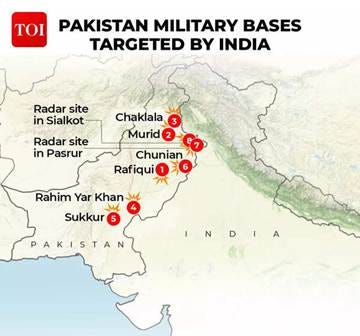

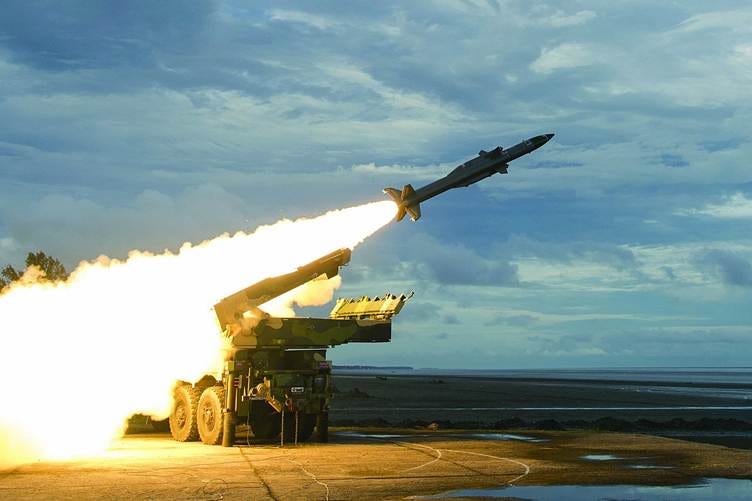
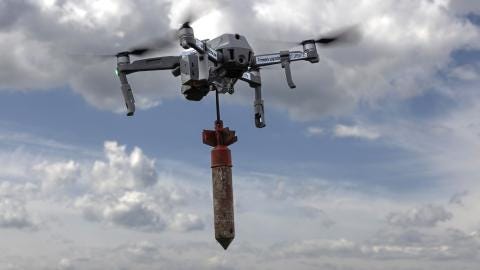

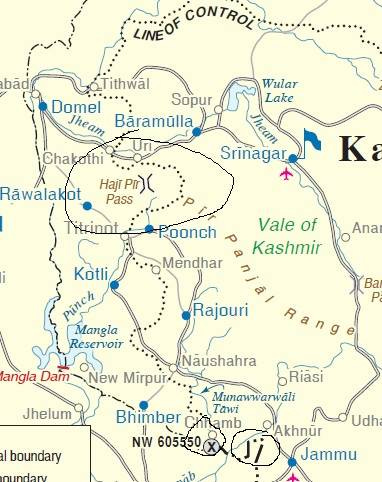

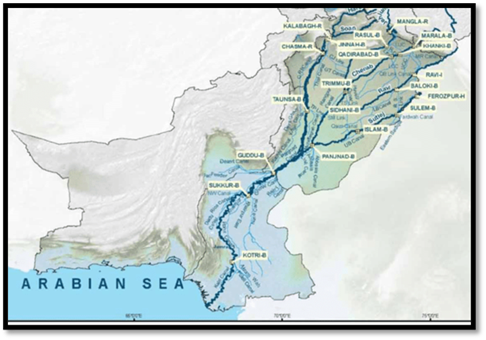
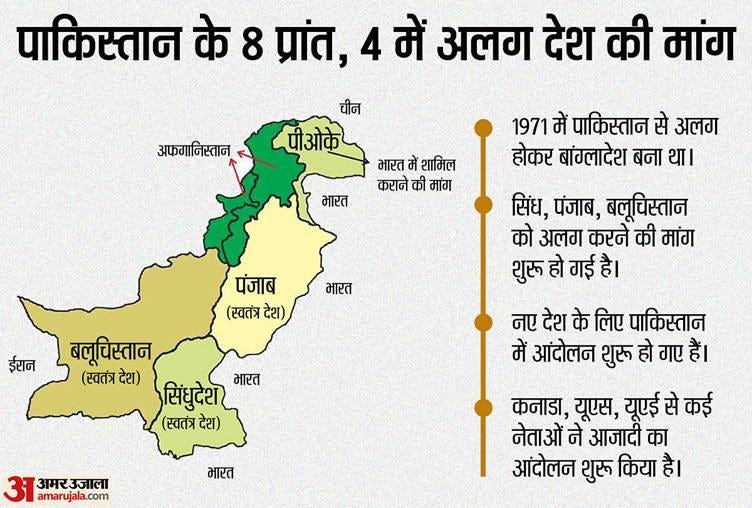
If a father keeps praising his son then that kid is sure not going to learn from his mistakes. I am astonished to see that Nehru was criticised badly and demand of urgent parliament session was raided by Atal Bihari Vajpayee on third day itself!
And he was still called a patriot.
There are many such instances during Congress rule but as soon as BJP rule begun in 2014 all such voices are declared as anti nationals by those people whose leaders have done such acts as stated above and still called patriot. This double standard has lead to the state India is in today.
While our defence minister took delivery of Rafael fighter jet by performing Pooja at foreign land as per Hindu religion only while we are secular country. We needed to perform Pooja rituals as per all religions of India. So the other religion’s god became angry upon not being given due respect.
So our pilots flying on their mission using high tech Rafael fighter jet could not return with their aircraft and had to eject as a light combat aircraft with Chinese PL-15 missile locks it to be able to hits it.
And reason is being cited that we do not have source code of it but real reasons are many. Upsetting gods of other religion, improper training and taking our enemy lightly. Instead of Pooja we needed to include source code handover in the deal.
We are more interested in disintegration of Pakistan than learning from our mistakes. Even Africa is discovering new technology faster than us!
After few years who will be taker of weapons produced by our Private companies except our use at huge cost of lives of trained military personnels.